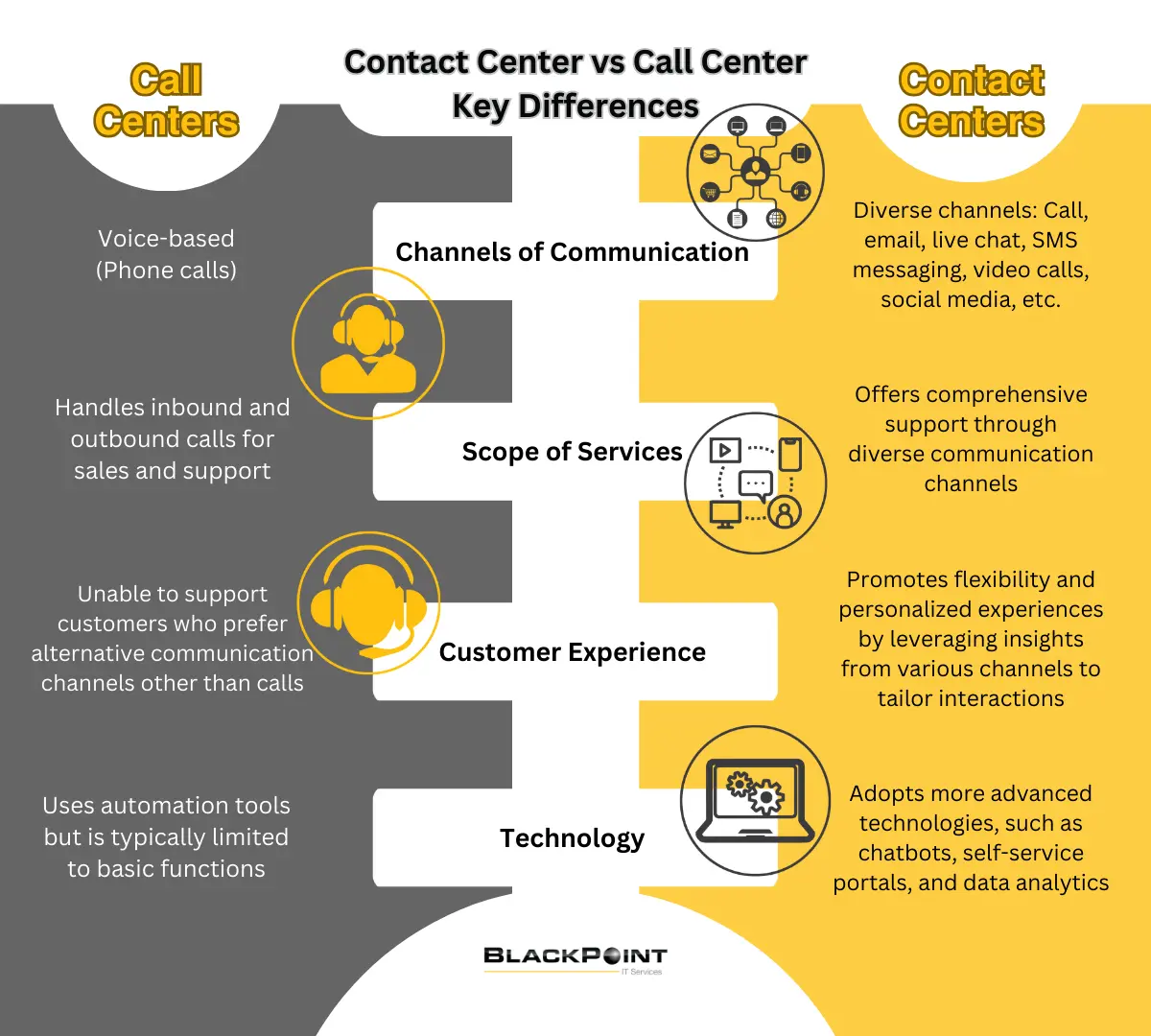
Customer experience (CX) has been the driving force behind today’s business success, with contact and call centers serving as primary touchpoints. Interactions within these centers directly impact customer satisfaction, retention, and brand perception.
According to a recent survey from Salesforce, phone calls remain a significant touchpoint with 61% of customers prefer them for support. Modern customers expect more, as highlighted by HubSpot’s 2021 survey, which shows that 90% of customers expect immediate responses, emphasizing the need for real-time support like phone calls, live chat and instant messaging via social media. This made us think about whether a contact center really is a better solution than traditional call centers.
In this article, we’ll tackle key differences between a call center using legacy systems and a contact center driven by AI and advanced data analytics.
Traditionally, call centers have provided support and sales services through voice calls, ensuring quick and direct customer assistance. But, with the introduction of contact centers, the customer experience has been taken to a whole new level. Contact centers offer various communication channels, including email, live chat, social media, and messaging apps.

Now let’s go into more detail about the differences between a traditional call center and a modern contact center. Aside from the pricing consideration, looking at other comparison points will help you decide which solution is best for your business and customer service requirements.
1. Channels of Communication
Call centers primarily use voice-based communication, which means customers interact with agents over the phone to address inquiries, resolve issues, or make purchases.
In contrast, contact centers offer a broader range of communication channels beyond voice calls, which include email, live chat, social media platforms, messaging apps, video calls, and more. With an omnichannel approach, your customers can leverage their preferred channels for interactions.
2. Scope of Services
The primary function of call centers is to handle inbound and outbound calls for customer support and sales purposes. Agents working in call centers are responsible for addressing customer inquiries, providing assistance, processing orders, and engaging in sales activities over the phone.
On the other hand, contact centers are an upgraded version of call centers, providing a more comprehensive range of support options. This includes email support and live chat.
By providing email support, customers can send detailed inquiries or concerns and receive timely responses from agents, allowing them to explain their issues in writing, attach any necessary documents, and receive a prompt and personalized response from the agents. While live chat facilitates real-time assistance which is particularly helpful for customers who prefer typing to speaking or those with hearing or speech impairments.
Customers can also leverage social media platforms like Facebook and Twitter as direct lines to brands, fostering quick responses and enhanced engagement. Messaging apps like WhatsApp and SMS further enhance accessibility, which benefits on-the-go customers who prefer quick and concise interactions.
3. Customer Experience
Many call centers still rely on traditional phone-based customer service. While this approach is effective for handling straightforward queries, it may lack the flexibility to accommodate customers who prefer alternative communication channels or seek more convenient and efficient ways to interact. This limited focus on phone-based communication can pose challenges for customers who prefer asynchronous communication, written documentation of their interactions, or faster resolution times through real-time chat support.
Contact centers prioritize delivering a flexible and personalized customer experience. The customer experience landscape has evolved, with modern customers demanding experiences crafted to their unique needs and preferences. Contact centers have greater ability to collect valuable insights through customer interactions across various channels to support personalization efforts. The insights collected allow contact center agents to deliver tailored experiences in real-time, addressing specific issues, recommending relevant products, and adapting their approach to meet individual needs.
4. Technology
Call and contact centers use automation tools to manage large call volumes and enhance customer service. Although both call and contact centers use comparable automation tools, modern contact centers are going beyond by using advanced technologies such as chatbots, self-service portals, and data analytics to improve their services.
We understand that one-size-fits-all solutions don’t always meet the unique needs of businesses. Our expert consultants will work closely with you to understand your business needs and tailor your customer experience platform.
With BlackPoint, you’ll have complete control and transparency over your platform, ensuring that you only pay for what you use. And that’s not all—our dedicated team is committed to your success and will guide you through every step of the process, from deployment and training to ongoing support. Contact us to learn more!